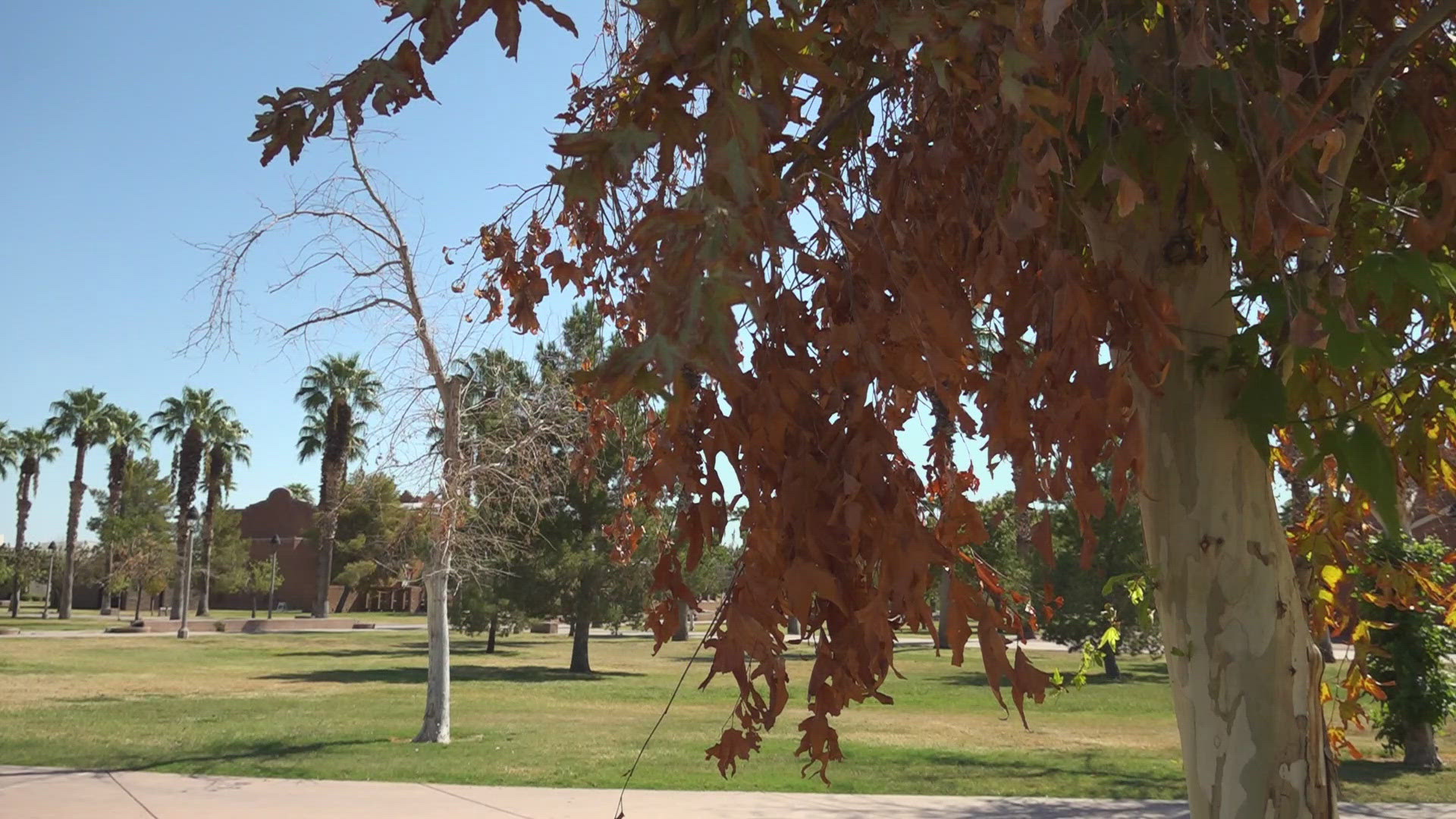A microburst is just like it sounds: a burst of air in a relatively small area, less than 2.5 miles.
But the damage that can result is anything but minor.
Its lifespan can last from just a few seconds to a few minutes, and in that time, strong straight-line winds are capable of toppling trees, pulling up power poles, ripping roofs and wiping out windows.
Microbursts can be just as damaging as a tornado. The difference is winds flow into a tornado but with a microburst, winds flow outward, leaving a trail of damage in a straight line.
Every monsoon thunderstorm that's of any significance produces a microburst. Some storms are stronger than others, which can lead to more damaging microbursts.
It's not unheard of to have winds as high as 150 mph in some of the strongest microbursts!
What's taking shape before a microburst hits is rain evaporates in dry air trapped in the mid-levels of the thunderstorm. Evaporation is a cooling process, so it chills the air. Cooler air is denser, so it drops like a rock.
You can also have so much rain within a storm that its weight drags the air down along with it.
The blast of air from the storm comes barreling down to the ground and after impact, it goes off like a bomb, exploding in every direction.


